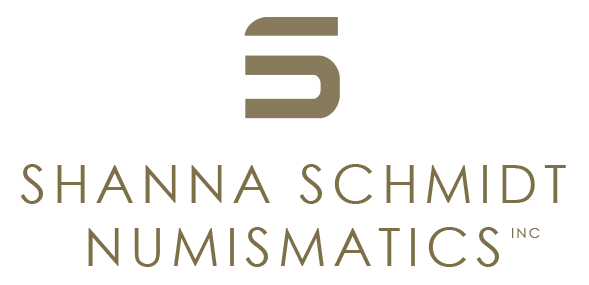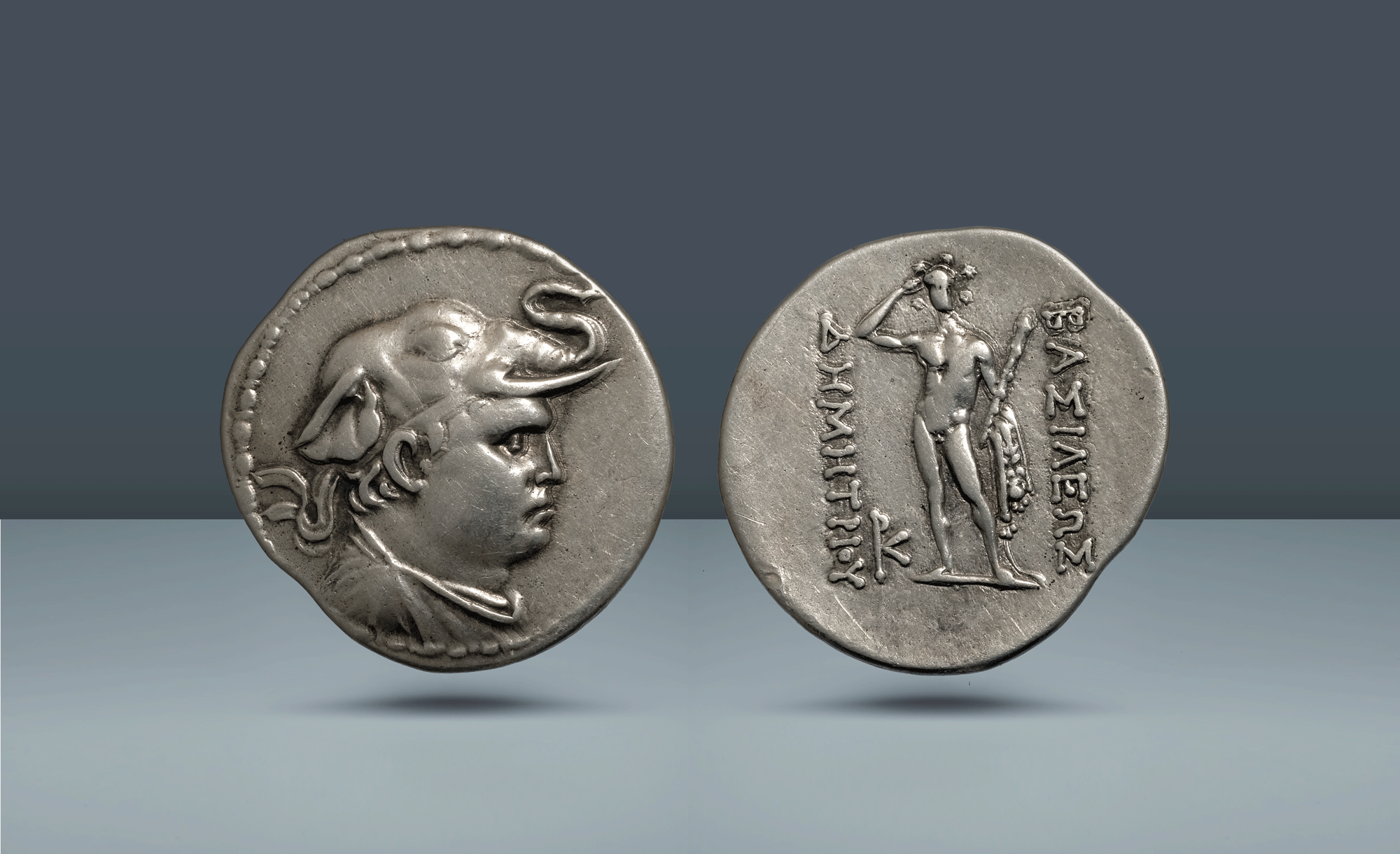GRECO-BAKTRIAN KINGDOM. Demetrios I Aniketos, 200–180 BC Panjhir (?), c. 200-185 BC
GRECO-BAKTRIAN KINGDOM. Demetrios I Aniketos, 200–180 BC Panjhir (?), c. 200-185 BC
AR Drachm, 4.16g (22mm, 12h).
Diademed and draped bust r., wearing elephant skin headdress / Herakles standing facing, crowning himself with r. hand, holding club and lion's skin in l.; BAΣIΛEΩΣ to r., ΔHMHTPIOY and monogram to l.
Pedigree: From the inventory of a German dealer; Acquired from Pars Coins, San Jose CA.
References: Bopearachchi 2A; SNG ANS -; HGC 12, 64.
Grade: Well centered with all details visible on planchet. Slight wear on face of elephant. Normal wear on reverse. Rare. VF+
gk1727c
Scroll down for more information about this coin.
While the tetradrachmai of Demetrios are relatively common, his drachmai are infrequently encountered. The designs on both faces portray a sense of royal and martial strength. The obverse, which displays one of the most interesting royal portraits in all of ancient Greek numismatics, depicts the king wearing a rather unproportionally sized elephant headdress. A slightly different style than the elephant headdress worn by Alexander the Great on the coinage of Ptolemy I, Demetrios was referring to his long military campaigns in India. His, however, were much more extensive, with the Greek historian Strabo claiming that "more tribes were subdued by [Demetrius] than Alexander ''.
The reverse depicts a muscular Hercules who is holding a club and the Nemean lion skin. This second parallel with Alexander the Great is not an accident. As the fourth ruler of the independent Greek Bactrian kingdom, Demetrios strove to depict strength and royal power on his coinage by tapping into western Greek numismatic imagery.

